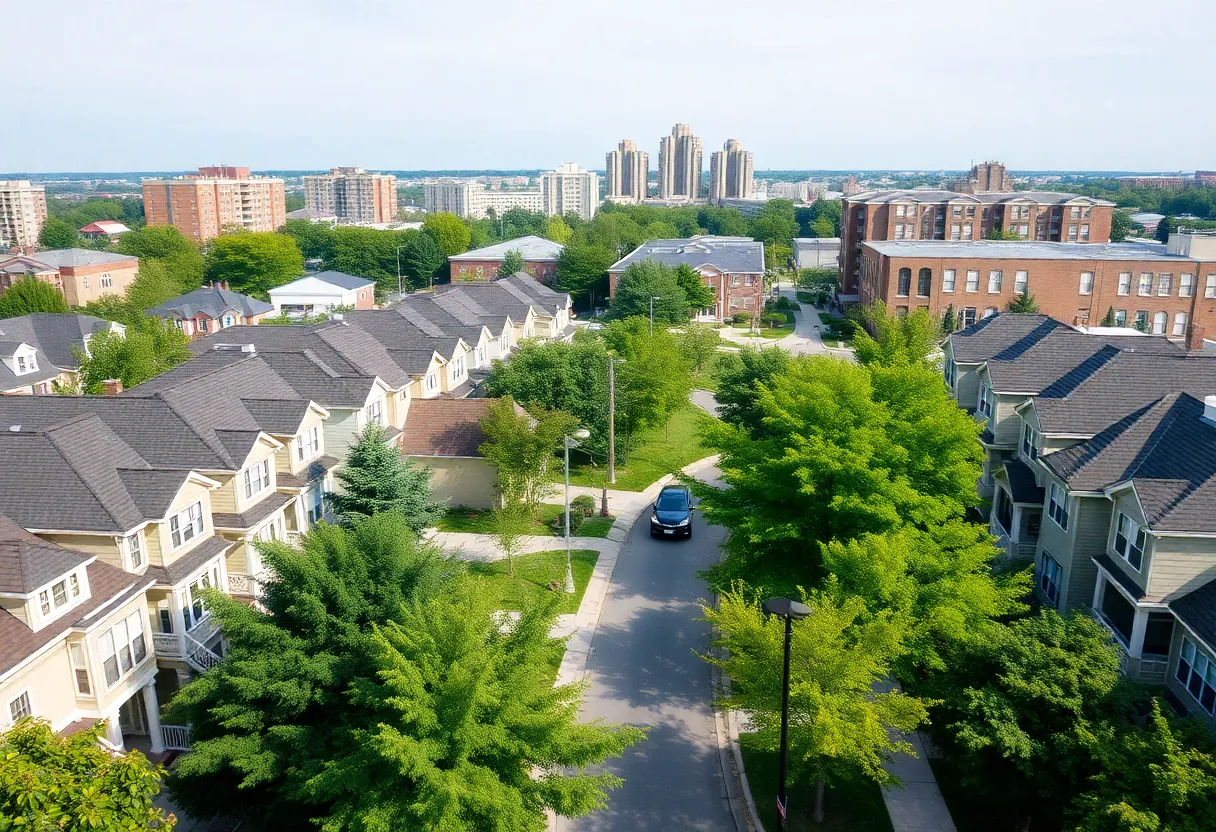News Summary
Royal Oak, Michigan, has approved a revised master plan aimed at addressing the growing need for multifamily housing. This marks the city’s first update to its master plan in over two decades, reflecting changes in demographics and household compositions. The plan promotes higher density along key corridors while preserving neighborhood character, amid varying public opinions on its potential impact. Local leaders emphasized the necessity for diverse housing options to cater to modern residents, along with sustainable developments featuring energy-efficient technologies.
Royal Oak, Michigan, has taken a significant step toward addressing the rising demand for multifamily housing by unanimously approving a revised master plan. This marks the first update to the city’s master plan since 1999, and it aims to adapt to the evolving needs of residents while preserving the character of existing neighborhoods.
City leaders recognized the shift in demographics contributing to the demand for more multifamily living options. The updated plan reveals that approximately 44% of Royal Oak’s households are comprised of single individuals, a notable increase of 9% since 2010. In contrast, two-person households with children have seen a decline to about 18%, reflecting a change in family structures and living preferences.
The revised master plan promotes increased density along key corridors while ensuring that existing residential areas remain protected. City Manager Joe Gacioch stated that the updated strategies are designed to prepare for a potential decline in demand for single-family housing over the next 50 years. This foresight aligns with a broader trend observed across Southeast Michigan, where an average of 4,100 new multifamily units are currently being built each year, compared to approximately 5,000 single-family homes.
The City’s master plan is responsive to the current housing market, where new data indicates that a majority of newcomers to Royal Oak prefer multifamily options instead of traditional single-family residences. Currently, single-family homes make up around 60% of the housing stock in Royal Oak, while multifamily units represent only 7%. This underscores the necessity for a diverse range of housing types to better match the changing demographics of the area.
Among the objectives outlined in the new plan is the enhancement of walkability throughout the city, as well as addressing persistent issues like basement flooding. However, the plan has sparked concerns among residents regarding potential impacts on neighborhood aesthetics and character. Opponents worry that the introduction of multistory buildings could alter the visual landscape of established areas.
Comments from local residents express varying perspectives on the master plan. Some raise valid points about the regulation of new developments and the potential for overdevelopment to encroach upon the character of existing neighborhoods. Other residents support the plan, highlighting its potential to meet the needs of a growing and diverse population.
Traffic and parking concerns have also surfaced, as residents express worries over the implications of new multifamily units on community safety in densely populated regions. These concerns reflect broader apprehensions regarding infrastructure capacity and the ability to accommodate an influx of residents.
Despite these concerns, the updated master plan includes provisions for energy-efficient developments, featuring systems such as solar panels and electric vehicle charging stations. This shift toward sustainable building aligns with contemporary expectations for modern housing developments.
Royal Oak isn’t alone in reassessing its housing strategies. Nearby cities like Detroit and Ferndale are also revising their master plans in light of similar demographic shifts and mismatches between housing types and resident needs. Ferndale, for example, has recognized the need to allow the construction of up to four housing units on residential lots to better accommodate changing demands.
Ultimately, the approval of Royal Oak’s master plan marks a landmark decision aimed at shaping the future housing landscape of the city, catering to the demand for diverse living options while attempting to balance community concerns and the preservation of local character.
Deeper Dive: News & Info About This Topic
HERE Resources
Michigan Cities Rank Among Worst for Bed Bug Infestations
Additional Resources
- The Detroit News
- Wikipedia: Royal Oak, Michigan
- Click On Detroit
- Google Search: Royal Oak Michigan housing plan
- CBS News Detroit
- Encyclopedia Britannica: Michigan
- Daily Tribune
- Google News: Royal Oak housing issues
- Crain’s Detroit Business

Author: STAFF HERE DETROITMI WRITER
DETROIT STAFF WRITER The DETROIT STAFF WRITER represents the experienced team at HEREDetroitMI.com, your go-to source for actionable local news and information in Detroit, Wayne County, and beyond. Specializing in "news you can use," we cover essential topics like product reviews for personal and business needs, local business directories, politics, real estate trends, neighborhood insights, and state news affecting the area—with deep expertise drawn from years of dedicated reporting and strong community input, including local press releases and business updates. We deliver top reporting on high-value events such as Movement Electronic Music Festival, Detroit Grand Prix, and America's Thanksgiving Parade. Our coverage extends to key organizations like the Detroit Regional Chamber and Focus HOPE, plus leading businesses in automotive and healthcare that power the local economy such as General Motors, Ford Motor Company, and Henry Ford Health. As part of the broader HERE network, including HEREGrandRapids.com, HERENorthville.com, HERENovi.com, and HEREPlymouth.com, we provide comprehensive, credible insights into Michigan's dynamic landscape.





